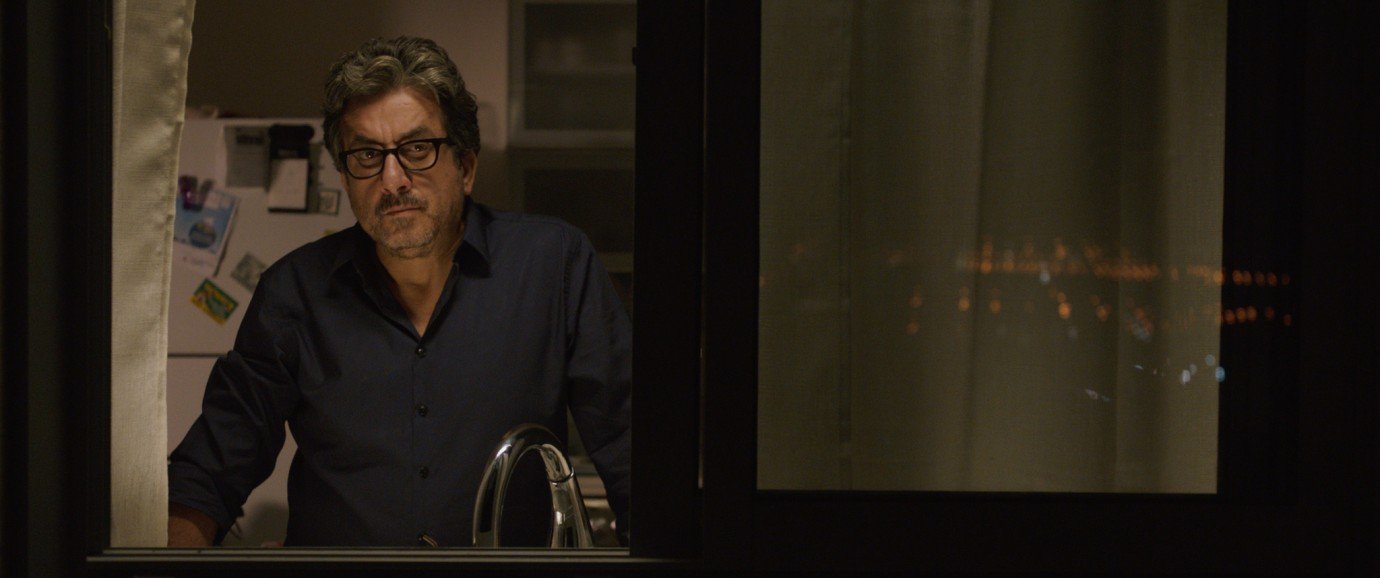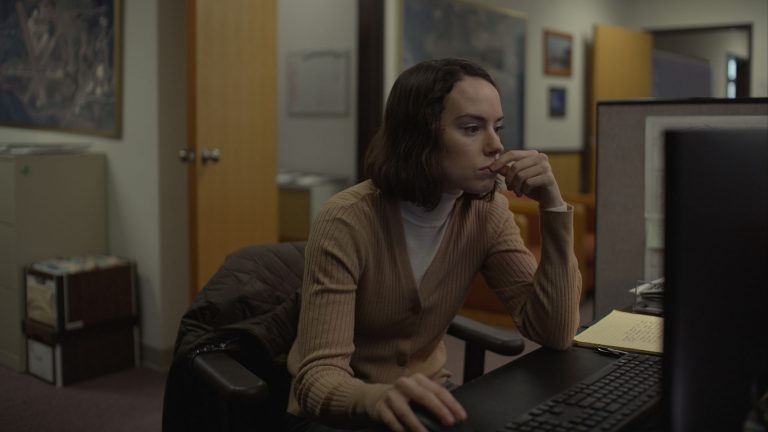The Day After I’m Gone is now streaming on MUBI
Early in the film, a Doctor – Also a father of a 17-year-old teenage girl goes into a police station to enquire and report of her absence. The policewoman questions the doctor about his daughter’s whereabouts and the father simply couldn’t trace a single thing that could clue him in. This is a funny scene where she asks him about her social media presence – A staple that the film examines contemporary teenage issues. Moreover, it sneaks us into the lack of communication that has become the root cause of this discrepancy between the father-daughter duo. The Day After I’m Gone motions into a few other reels as we see Roni (Zohar Meidan) – The Daughter undergoing a failed suicide attempt.
The intial setting and drama set forth in Nimrod Eldar’s feature debut promises a thorough examination of this father-daughter relationship. But surprisingly, the director opts for a subtle root to let his characters react to each other in a firmly told story. While the film ultimately examines teenage mental illness and the cause; it never prods into a coming of age story that divulges into Roni’s story. On the contrary, it takes moments and silences for the reason behind this lack of communication between the father and the daughter.
Also, Read – Gully Boy [2019]: ‘Berlin’ Review – A coming-of-age tale that just skims the surface
It is never directly mentioned what is the reason why Roni chugs down bottles of pills down her throat. However, her acute depression can be related to the grief that she has long sustained in her heart after her mother passed away. Her father Yoram (Menashe Noy) seems to be operating fine in the real world. The film opens with him operating on a Jaguar. The precision in his work shows that there’s something that’s holding him back. Most of the intial film is set in an Animal Sanctuary where he quietly looks at a family trying to fetch a ball that’s near a herd of Hippopotamus. The emotions that he is undergoing are always muted and left for the viewer to comprehend.
While the emotional connection to the film undergoes an even bleaker transition in the later part of the film, as a person watching these lives unfold, it’s difficult to really see beyond the surface. Also, what starts at the Sanctuary where animals and humans co-exist – The setting moves to a much blander road and country home that just takes away connect initially established. It’s a bold move from Nimrod as he takes us away from the quieter inhibition to a loud household that has suffered grief recently. While it could have served as an important narrative choice, the treatment gets diluted as the emotional wreckage that the girl’s suicide cause in the father never truly match the reconciliation and their possible understanding that they only have each other to live through now.
Yoram, who is a passive-aggressive character keeps himself at arm’s length from his disturbed daughter. He even goes ahead to comment on her character as a teenage rebellion. His inability to understand his daughter’s reasons for more attention forms the crux of Eldar’s film that, in spite of little to say manages to put things into perspective with a blazing dream sequence.
There is also a minimal critic of Israel’s contemporary political stature. From random snippets from television to a sing-song sequence that curtly manufactures fake patriotism, the kind of silent solace The Day After I’m Gone finds in-between city protests rigs it a truly minimalistic quality that keeps it in thoughts for a longer period. Muted emotions aside, this is a very well-intentioned debut.




![Come Here [2021]: ‘Berlinale’ Review – Vague Thai diversion explores cinema that denies a definition](https://79468c92.delivery.rocketcdn.me/wp-content/uploads/2021/03/Come-Here-1-highonfims-768x576.jpg)
![Random Acts of Violence [2020] Review – A meta-critic of the glorification & fetishization of cruelity in art](https://79468c92.delivery.rocketcdn.me/wp-content/uploads/2020/08/Random-Act-Of-Violence_Review-hof-768x512.jpg)

![Old Stone [2016] – A Taut Drama on the Bone-Chilling Bureaucratic Insensitivity](https://79468c92.delivery.rocketcdn.me/wp-content/uploads/2018/05/cover-768x432.jpeg)
![The Levelling [2017]: An Internal rage and grief tripping in silence](https://79468c92.delivery.rocketcdn.me/wp-content/uploads/2017/06/The-Levelling-highonfilms-768x403.jpg)
